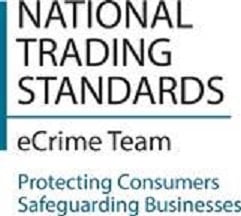Make sure you mullet over before you fall victim to phishing emails on National Fish and Chip Day
• Action Fraud received over a quarter of a million reports of phishing between April 2018 and March 2019
• Most commonly spoofed sectors are telecoms companies, technology brands and Government organisations
• Never automatically click on a link in an unexpected email or text
The national Cyber PROTECT Network, led by the City of London Police and in partnership with Action Fraud, is warning people to lookout for phishing messages on National Fish and Chip Day.
Action Fraud received over a quarter of a million reports of phishing between April 2018 and March 2019.Over two thirds of these reports were about emails claiming to be from a well-known brand.
There were almost 70,000 that related to phishing phone calls, otherwise known as vishing, and close to 18,000 relating to phishing text messages, known as smishing.
Commander Karen Baxter, National Police Coordinator for Economic Crime at the City of London Police, said:
“Phishing messages are a fraudster’s gateway. If you provide personal details in response to these messages, this can give criminals access to your accounts, leaving them free to commit fraud.
“Fraudsters often use spoofed phone numbers and email addresses to trick you. If you receive a message claiming to be from a well-known brand or organisation, always check directly with that brand or organisation to see if it is legitimate. If something feels wrong then it is usually right to question it. ”
Phishing is an enabler of fraud. These messages are commonly used by fraudsters to gain access to the victim’s personal details, including date of birth, banking details and addresses. The victim’s details are then used to commit fraud and / or cyber crime.
The most commonly spoofed sectors are telecoms companies, technology brands and Government organisations.
Protection advice
- Don’t click on the links or attachments in suspicious emails, and never respond to unsolicited messages and calls that ask for personal or financial details.
- Caller ID and email addresses can be spoofed by criminals, so these shouldn’t be used to determine if the communication is legitimate.
- Anyone who has provided personal or financial details as a result of a phishing message, has lost money to a fraudster, or you have received a phishing message, even one not acted upon, should report to Action Fraud.
One victim who spoke to the City of London Police’s Economic Crime Victim Care Unit said he felt stalked and warned people to be cynical, never doubt their instincts and react quickly to an attack. He knew he was compromised at the time and changed his passwords, but says that he now wishes he had reacted quicker. It wasn’t until speaking to people he knew that worked in IT that he was informed of what further steps to take. He then spent 24 hours cancelling false log ins and changing passwords. He advised people to log into their settings to see how many sessions they are logged into for their online accounts.
Chris Ainsley, Head of Fraud Strategy at Santander UK said:
“Email and text messages sent by fraudsters can be highly sophisticated, appearing in inboxes as convincing and genuine messages from brands customers know and trust. In some instances, they can even appear in the same thread as genuine messages.
“There are signs to look out for such as spelling mistakes, generic greetings rather than your name and suspicious looking email addresses. Ultimately, the best way for customers to check if a message or request is genuine is to contact the “business” that the message claims to be from using independently sourced contact details.”









































